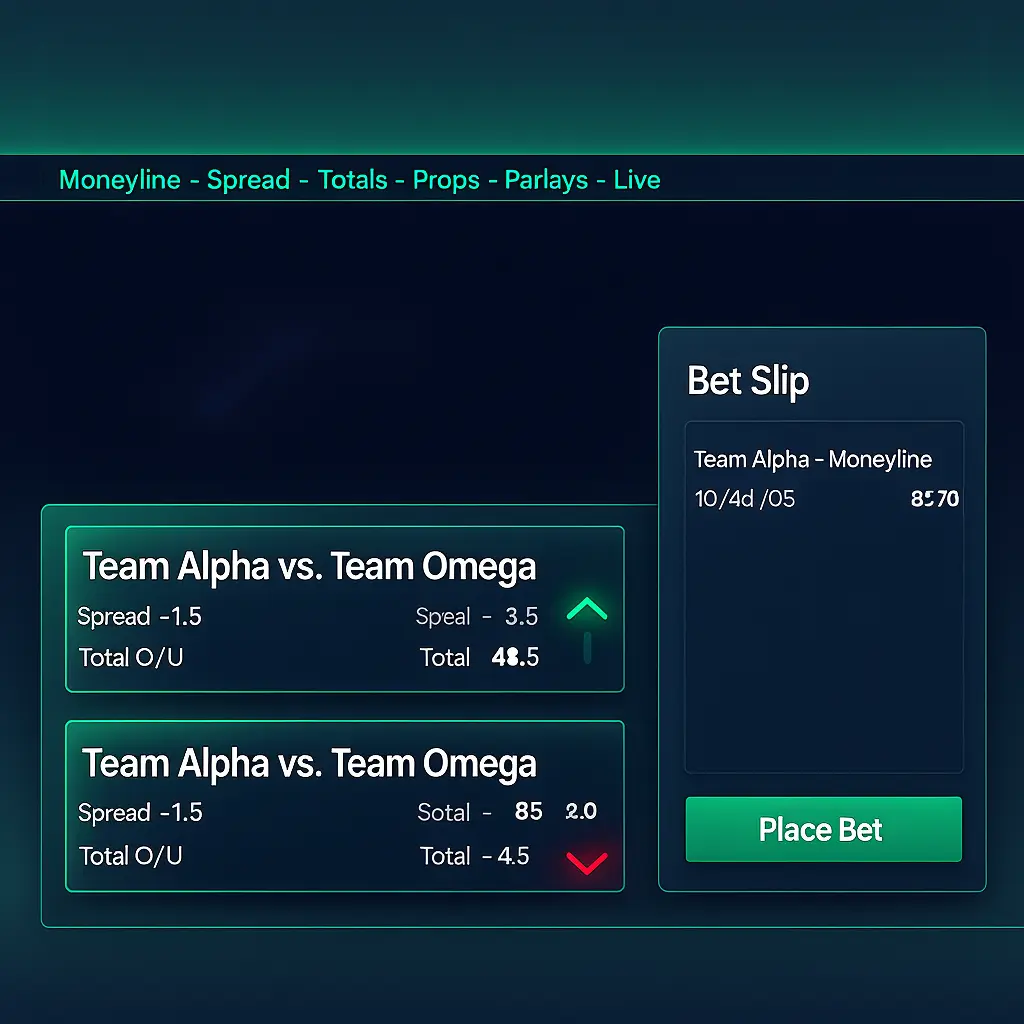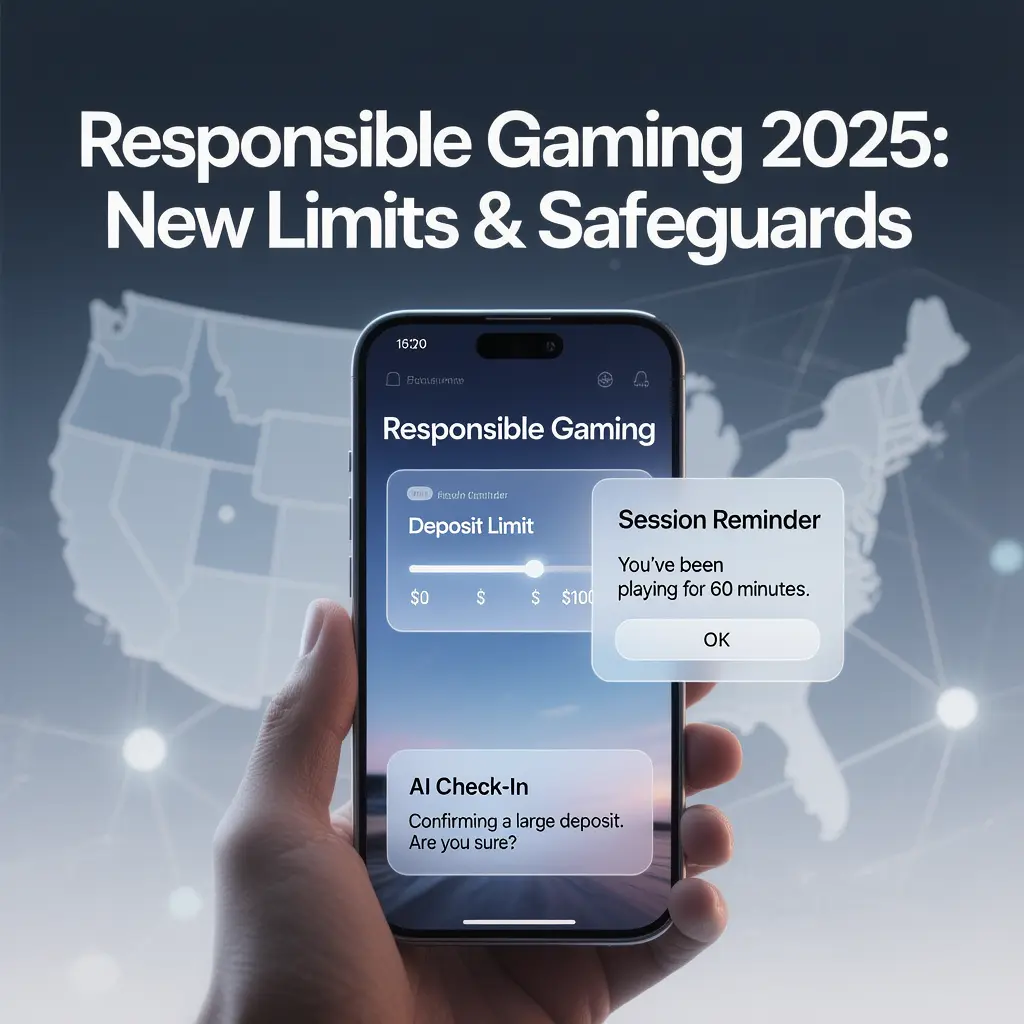Have you ever wondered why most sports bettors lose money over time, while a small group seems to win consistently? The secret isn’t luck; it’s strategy. Recreational players bet with their gut, but professionals use advanced sports betting strategies to turn the odds in their favor. This guide will show you how to move from casual guessing to profitable, data-driven betting. We’ll explore the three pillars that separate the pros from the amateurs: sports arbitrage, meticulous line shopping, and sharp value betting. By understanding how to find arbitrage betting opportunities and applying disciplined market analysis, you can start building a sustainable edge against the house.
What Makes Advanced Betting Strategies Essential for Serious Bettors
For a casual fan, placing a bet is about adding excitement to the game. For a serious bettor, it’s a calculated investment. The house always has a built-in advantage, known as the “vig” or “juice.” Without a strategic approach, this small edge grinds down your bankroll over the long run. Advanced sports betting strategies are designed to flip this dynamic by identifying and exploiting inefficiencies in the betting market. It’s about finding moments where the bookmaker’s odds don’t reflect the true probability of an outcome, giving you a mathematical advantage.
The Evolution from Casual to Professional Sports Betting
The journey from a casual to a professional bettor is a shift in mindset. It means moving away from betting on your favorite team and instead focusing on numbers, data, and market behavior. Professionals don’t just pick winners; they hunt for profitable prices. This involves constant odds movement tracking, disciplined bankroll management, and using specialized tools. The strategies we’ll cover—sports arbitrage, line shopping, and value betting—are the core components of this professional approach, transforming betting from a gamble into a skill-based endeavor.
Understanding Sports Arbitrage Betting
One of the most powerful advanced sports betting strategies is sports arbitrage, often called “arbing” or “sure betting.” It’s a method that allows you to bet on all possible outcomes of an event across different sportsbooks, guaranteeing a profit no matter who wins. This isn’t about predicting the future; it’s about exploiting mathematical discrepancies in the odds offered by competing bookmakers.
What Is Arbitrage Betting and How Does It Guarantee Profit?
Arbitrage betting works because not all sportsbooks have the same odds for the same event. When the odds on different outcomes at different bookies are far enough apart, you can place calculated bets on each outcome to lock in a small, risk-free profit. The combined implied probability of the odds you bet on will be less than 100%, and that gap is your profit margin. This is a pure mathematical play that removes luck from the equation.
Sports Arbitrage: A risk-free betting strategy where a bettor places proportional bets on every possible outcome of an event at different sportsbooks, guaranteeing a profit regardless of which outcome occurs.
Real-World Arbitrage Betting Example with Calculations
Let’s say you’re looking at a tennis match between Player A and Player B. You find the following odds at two different sportsbooks:
- Sportsbook 1: Player A to win at 2.10 odds.
- Sportsbook 2: Player B to win at 2.05 odds.
To see if this is an arbitrage opportunity, we calculate the implied probability for each bet:
- Player A: (1 / 2.10) * 100 = 47.62%
- Player B: (1 / 2.05) * 100 = 48.78%
The total implied probability is 47.62% + 48.78% = 96.4%. Since this is less than 100%, a guaranteed profit exists. The profit margin is 100% – 96.4% = 3.6%.
Now, let’s say you want to invest a total of $100. You would use an arbitrage calculator or the following formulas to determine your stakes:
- Stake on Player A: ($100 * 47.62%) / 96.4% = $49.40
- Stake on Player B: ($100 * 48.78%) / 96.4% = $50.60
Let’s check the outcomes:
- If Player A wins: Your $49.40 bet returns $49.40 * 2.10 = $103.74. Your profit is $3.74.
- If Player B wins: Your $50.60 bet returns $50.60 * 2.05 = $103.73. Your profit is $3.73.
No matter who wins, you make a risk-free profit of around $3.70. While this seems small, professional arbers do this hundreds of times to build their bankroll.
Finding Arbitrage Opportunities
Knowing what sports arbitrage is and finding opportunities are two different things. Arbs are rare and disappear quickly, so you need to know where and how to look. This is where understanding the market structure becomes crucial.
Sharp vs. Soft Bookmakers: Where Arbitrage Lives
The betting world is divided into two types of bookmakers:
- Sharp Bookmakers: These are high-volume, low-margin operators (like Pinnacle) that have very accurate odds. They welcome professional bettors and adjust their lines instantly based on market action.
- Soft Bookmakers: These are recreational, high-margin bookmakers (like many mainstream brands) that are slower to adjust their odds. They often limit or ban winning players.
Arbitrage opportunities almost always exist between a sharp bookmaker and a soft bookmaker. The sharp book moves its line in response to news or heavy betting, while the soft book lags behind, creating a temporary price discrepancy you can exploit.
Using Arbs Finder Tools and Software
Manually searching for arbs is nearly impossible. The odds change too fast. That’s why serious bettors use arbs finder software. These tools scan hundreds of bookmakers in real-time and send you alerts when an arbitrage opportunity appears. They show you the event, the bookmakers, the odds, and the guaranteed profit percentage. Some tools even include a built-in hedge calculator to tell you exactly how much to stake on each side.
Steam Chasing and Odds Movement Alerts
A “steam move” is a sudden, drastic line change caused by a flood of money from respected betting syndicates (sharp money). Steam chasing is the strategy of quickly betting the old, unadjusted line at a soft bookmaker before they catch up. This often creates arbitrage or high-value bets. Setting up odds movement alerts with specialized tools is key to catching these moves. You can get a notification the moment a line moves by a certain percentage, allowing you to act before the opportunity vanishes.
Line Shopping Mastery
If you only take one thing away from this guide, let it be this: you must practice line shopping. It is the easiest and most effective of all advanced sports betting strategies to implement. Simply put, line shopping is the act of checking the odds for the same bet across multiple sportsbooks to ensure you get the absolute best price. Failing to do so is like willingly paying more for the same product at a different store.
Why Every Half-Point Matters in Line Shopping
A small difference in odds might not seem like a big deal for a single bet, but it has a massive impact on your long-term profitability. For example, consistently betting on a point spread at -110 instead of -105 means you need to win 52.4% of your bets to break even, versus just 51.2% at the better price. That 1.2% difference is often the gap between a winning and a losing bettor over a full season. The same applies to moneylines; getting +150 instead of +140 significantly boosts your return on investment (ROI).
How to Line Shop Effectively Across Multiple Sportsbooks
Effective line shopping requires having accounts and funds at several different sportsbooks. A good mix includes a few sharp bookmakers to see the “true” market line and several soft bookmakers where you’re more likely to find outlier prices. Before placing any bet, your workflow should be to check the line for that bet at all of your available books. This process takes only a few seconds but can save or make you hundreds or thousands of dollars over time. This is a fundamental part of any good line shopping guide.
Key Numbers in NFL and Other Sports
In some sports, certain numbers are more important than others. In the NFL, the most common margins of victory are 3 and 7 points. This makes getting a line of +3.5 instead of +2.5, or +7.5 instead of +6.5, incredibly valuable. A successful line shopping strategy in football revolves around finding these key half-points. Similar key numbers exist in other sports, like 1.5 runs in baseball or specific totals in basketball, and understanding them is vital for effective market analysis.
Tools and Technology for Line Shopping
In today’s fast-moving market, manual line shopping can be slow. To be truly efficient, you need to leverage technology. A variety of tools can automate the process, giving you real-time information to make the best decisions quickly.
Best Odds Aggregators and Comparison Sites
Odds aggregators are websites and software that pull odds from dozens of sportsbooks into a single, easy-to-read interface. Instead of opening 10 different browser tabs, you can see the best line for any game on one screen. Some popular free options provide basic comparisons, while paid services offer faster refresh rates, more bookmakers, and advanced filtering. These tools are essential for anyone serious about finding the best prices.
Real-Time Line Movement Trackers
Beyond just comparing current odds, advanced bettors use tools for line movement tracking. These platforms show you the history of a line, from its opening number to its current price. This helps you understand market trends, identify when sharp money is coming in, and decide whether to bet now or wait for a better price. Setting up tools for odds movement alerts can notify you instantly when a line you’re watching moves, so you never miss an opportunity.
Value Betting Fundamentals
While arbitrage offers guaranteed but small profits, value betting is where many professional bettors make their real money. It’s an advanced sports betting strategy that focuses on finding and betting on odds that are “wrong” in your favor, offering positive expected value (+EV) over the long term.
What Is Value Betting and Expected Value (EV)?
A value bet exists when you believe the true probability of an outcome is higher than the probability implied by the bookmaker’s odds. Expected Value (EV) is a calculation that tells you how much you can expect to win or lose on average if you were to make the same bet over and over again.
Value Betting: The strategy of placing a wager only when the odds offered by a bookmaker are higher than the true probability of the outcome, resulting in a positive expected value (+EV).
How to Identify Value Bets in Sports Markets
To find a value bet, you must do two things:
- Calculate the implied probability from the bookmaker’s odds.
- Estimate the “true” probability of the outcome using your own analysis, a statistical model, or by referencing the odds at a sharp bookmaker.
If your true probability is higher than the implied probability, you have found a value bet. For example, a bookie offers 2.20 odds on a team to win. The implied probability is (1 / 2.20) * 100 = 45.5%. If your model suggests the team actually has a 50% chance to win, this is a +EV bet. The key to identifying value bets is having a more accurate assessment of probability than the bookmaker.
Positive EV vs. Arbitrage: Key Differences
Arbitrage guarantees a small, immediate profit. Value betting does not guarantee you will win any single bet. In fact, you might lose many value bets. However, because you are consistently betting with a mathematical edge, you are guaranteed to make a profit over the long run (hundreds or thousands of bets). A 3% arbitrage opportunity gives you a $3 profit on a $100 stake. A 3% value bet might lose you $100 today, but over time, each $100 bet will average a $3 profit. Professionals focus on value betting strategies because the long-term ROI is often much higher than that of arbitrage.
Advanced Value Betting Techniques
Simply finding a value bet is the first step. Advanced bettors use sophisticated metrics and market signals to refine their value betting strategies and confirm they are on the right side of a wager.
Closing Line Value (CLV) as a Performance Metric
Closing Line Value (CLV) is one of the most important indicators of long-term betting skill. It measures the difference between the odds you bet and the final “closing” odds offered right before the game starts. The closing line is considered the most efficient and accurate reflection of the market. If you consistently bet on lines that are better than the closing line (e.g., you bet a team at -4 and they close at -5.5), you are achieving positive CLV. This proves you are identifying value before the market corrects itself and is a strong predictor of long-term profitability.
Reverse Line Movement and Its Significance
Reverse line movement is a powerful signal for value bettors. It occurs when the betting line moves in the opposite direction of the public betting percentages. For example, if 80% of the public is betting on the Patriots, but the line moves in favor of their opponent, it’s a huge red flag. This indicates that large, respected “sharp” bettors are placing heavy money on the other side, and the bookmakers are adjusting their lines based on this sharp action, not the public sentiment. Following these moves can lead you to significant value.
Using Sharp Book Odds as True Market Reference
One of the most effective ways to perform advanced betting market analysis is to use sharp bookmakers like Pinnacle as your baseline for “true” odds. Because their lines are so efficient, you can remove the vig from their odds to get a close approximation of the true probability. Then, you can compare this to the odds at soft bookmakers. If a soft book is offering a significantly better price than the vig-free sharp line, you have likely found a strong value bet.
Odds Movement Tracking and Analysis
The betting market is a living entity, with prices constantly changing. Understanding why odds movement occurs and how to track it is a cornerstone of advanced sports betting strategies. It allows you to anticipate market trends and find value before it disappears.
Understanding Dropping Odds and What They Signal
Dropping odds occur when a bookmaker shortens the price on an outcome (e.g., moving from 2.50 to 2.20). This usually happens for a few reasons: a large volume of money is being placed on that outcome, important team news has broken (like an injury to a star player), or bookmakers are adjusting to a move at a sharp book. Tracking dropping odds can signal where the smart money is going, providing valuable insights for your own market analysis.
Steam Moves and Following Sharp Money
As mentioned earlier, a “steam move” is a rapid, market-wide line shift initiated by sharp betting syndicates. These bettors invest huge amounts of money, forcing all bookmakers to adjust their lines to avoid exposure. By using line movement tracking tools, you can spot these steam moves as they happen. The strategy of steam chasing involves quickly placing a bet at a bookmaker who is slow to react, capturing the old, more favorable price. This is a high-level technique that requires speed and the right technology.
Setting Up Odds Movement Alerts
You can’t watch the market 24/7. That’s why setting up odds movement alerts is so effective. You can use specialized software to notify you via email or push notification when odds for a game you’re watching drop by a certain percentage or cross a specific threshold. This automates the monitoring process and ensures you’re alerted to potential arbitrage and value opportunities the moment they arise. These tools for odds movement alerts are indispensable for serious bettors.
Middling and Hedging Strategies
Beyond finding value, advanced bettors use strategies to manipulate risk and, in some cases, create scenarios where they can win two bets on the same game. Middling and hedging are two such techniques that rely on line movement.
What Is Middling and How to Win Both Bets
Middling is an advanced strategy where you bet on both sides of a game using two different point spreads, creating a “middle” range where both of your bets can win. For example:
- Bet 1 (Early in the week): You bet on the New England Patriots +7.5.
- Bet 2 (Later in the week): The line moves, and you bet on their opponent, the Kansas City Chiefs, at -6.5.
If the Chiefs win by exactly 7 points, both of your bets win! You’ve hit the middle. Even if you don’t hit the middle, you’ve guaranteed a small loss (the juice on one bet) in exchange for a chance at a huge payout. This strategy requires significant line movement and is a great way to capitalize on market volatility.
Strategic Hedging for Risk Management
Hedging is a form of risk management used to guarantee a profit or minimize a loss on a previous bet. For example, imagine you placed a futures bet on the Lakers to win the championship at +800 odds. They make it to the NBA Finals. You can now hedge by betting on their opponent to win the series. This way, no matter who wins the Finals, you are guaranteed to make a profit. A hedge calculator can help you determine the exact amount to bet on the other side to lock in an equal profit regardless of the outcome.
Market-Specific Strategies
While the principles of arbitrage, line shopping, and value betting apply to all sports, certain markets offer unique opportunities. A deep market analysis reveals where to focus your attention for the best results.
Asian Handicap Arbitrage and Value Opportunities
The Asian handicap market is a favorite among professional bettors because it eliminates the “draw” outcome and often has lower margins. The quarter-line (-0.25, -0.75) and half-line (-0.5, -1.5) variations can create excellent arbitrage and middling opportunities between bookmakers who price these complex lines differently. Understanding how these lines work is essential for betting on soccer and other international sports.
Over/Under Market Line Shopping
When betting on totals (Over/Under), line shopping is critical. A half-point difference can be the difference between a win, a loss, or a push. For example, getting an Over 48.5 in an NFL game is far better than Over 49. The half-point removes the possibility of a push, which is a huge advantage. Sharp bettors relentlessly shop for the best total, especially around key numbers in sports like basketball and football.
In-Play vs. Pre-Match Market Analysis
The in-play market is far more volatile than the pre-match market. Odds change after every play, creating a constant stream of potential arbitrage and value opportunities. However, it also requires incredible speed and focus. Pre-match analysis allows for more deliberate research, while in-play betting is about quick reactions and exploiting latency impact between your TV feed and the bookmaker’s data.
Risk Management and Stake Optimization
Employing advanced sports betting strategies is useless without disciplined risk management. How you manage your money is just as important as how you pick your bets. Your goal is to grow your bankroll steadily while protecting it from the inevitable downswings.
Bankroll Management for Advanced Strategies
Proper bankroll management is the foundation of all successful betting. A common rule is to only risk 1-2% of your total bankroll on any single bet. For arbitrage betting, you’ll need to have your bankroll spread across multiple sportsbooks to execute bets quickly. Never chase losses or bet more than you can afford to lose. As I’ve mentioned in my guide to responsible gambling, discipline is your greatest asset.
Kelly Criterion and Stake Optimization
For value betting, many professionals use the Kelly Criterion for stake optimization. This is a mathematical formula that calculates the optimal percentage of your bankroll to bet based on your perceived edge. It helps you bet more when you have a bigger advantage and less when your edge is small, maximizing your bankroll’s long-term growth. However, the full Kelly can be aggressive, so many bettors use a “fractional Kelly” (e.g., half or quarter Kelly) to reduce variance.
Avoiding Common Pitfalls in Arbitrage and Value Betting
There are risks involved. For arbitrage, a common pitfall is having one of your bets canceled or limited by a soft bookmaker after you’ve placed the other side. For value betting, the biggest risk is incorrectly calculating the true probability and betting on a line that actually has negative expected value. Diligence, speed, and accurate analysis are key to avoiding these costly mistakes.
Advanced Tools and Software
To compete in today’s market, you need the right tools. Professional bettors rely on a suite of software to automate research, find opportunities, and execute bets efficiently. These tools provide the speed and data necessary to implement advanced sports betting strategies effectively.
Arbitrage Betting Software and Scanners
Arbs finder software is non-negotiable for arbitrage betting. These services scan hundreds of bookmakers 24/7 and provide instant alerts for any arbitrage opportunities. They are the only realistic way to find and act on arbs before they disappear.
Value Betting Tools and Positive EV Finders
Similar to arb finders, value betting tools scan the market for +EV opportunities. They compare the odds at soft bookmakers to the sharp, efficient lines of bookmakers like Pinnacle, highlighting any significant price discrepancies that represent potential value.
Profit Calculators and ROI Trackers
A simple arbitrage calculator or profit calculator is essential for quickly determining stakes and potential returns. For long-term success, using a bet tracker to log every wager, calculate your ROI, and measure your CLV is crucial for analyzing performance and refining your strategy. Many of these functions are available in our own iGaming tools and calculators.
Practical Implementation Guide
Theory is great, but execution is what matters. Here is a step-by-step guide to putting these strategies into practice. This is how you can learn arbitrage betting and other advanced methods systematically.
Step-by-Step: Setting Up Your Betting System
- Open Multiple Accounts: Sign up for accounts at a mix of sharp bookmakers (e.g., Pinnacle) and several soft bookmakers. Complete the identity verification process for all of them.
- Fund Your Accounts: Distribute your bankroll across these accounts. You need funds ready to go so you can act instantly when an opportunity arises.
- Subscribe to Tools: Choose an odds aggregator and/or an arbitrage/value betting scanner that fits your budget. Set up odds movement alerts for the sports and markets you want to follow.
- Establish a Routine: Create a daily workflow. This could involve checking for overnight line moves, monitoring alerts during the day, and being ready to act quickly when an opportunity is flagged.
- Keep Meticulous Records: Track every bet you make in a spreadsheet or with a bet tracking app. Record the sport, bet type, stake, odds, bookmaker, and the closing line. This data is vital for performance analysis.
Conclusion: Combining Strategies for Maximum Profitability
Mastering advanced sports betting strategies is a journey, not a destination. The path from a recreational player to a profitable one is paved with discipline, continuous learning, and a systematic approach. Sports arbitrage, line shopping, and value betting are not mutually exclusive; they are complementary tools in a professional bettor’s arsenal. You might use line shopping on every bet, hunt for value as your primary strategy, and jump on arbitrage opportunities when they appear.
Remember that success is built on compounding small edges over time. It’s not a get-rich-quick scheme. Start by mastering one strategy, like line shopping, before moving on to more complex methods. With a solid foundation in sports betting basics, proper bankroll management, and the strategic frameworks outlined in this guide, you have a clear roadmap to becoming a more intelligent and profitable sports bettor.
Frequently Asked Questions
Q1. What is the easiest way to remember Texas Hold’em rules?
Think of it in four simple stages: Preflop (two cards, first bets), Flop (three cards, second bets), Turn (one card, third bets), and River (final card, final bets). Your goal is always to make the best five-card hand from the seven available. Start by playing for fun or very low stakes to get a feel for the flow.
Q2. What are the best starting hands in Texas Hold’em?
The premium starting hands are big pairs like AA, KK, QQ, and JJ, and big suited connectors like AKs. However, the value of a hand depends heavily on your position. A hand like 76s (suited) is weak in early position but can be very powerful in late position due to its potential to make a straight or flush.
Q3. How do you know when to bet or check?
This is the core of poker strategy. Generally, you bet for two reasons: for value (when you think you have the best hand and want to get paid) or as a bluff (when you think you can make a better hand fold). You check to see a free card, to control the size of the pot with a medium-strength hand, or to set up a check-raise.
Q4. What is more profitable, cash games or tournaments?
Both can be very profitable, but they require different skill sets and bankrolls. Cash games offer more stability and a steadier income stream for skilled players. Tournaments have much higher variance but offer the chance for a massive, life-changing score for a small investment.
Q5. How important is math in poker?
While you don’t need to be a math genius, understanding basic concepts like pot odds, equity, and combinations is essential for long-term success. It turns guessing into calculated decision-making. Using an equity calculator to study hands away from the table is a great way to improve.
Q6. How do I avoid going on tilt?
Effective tilt control comes from a combination of proper bankroll management (so no single loss is devastating), understanding variance (accepting that bad beats will happen), and self-awareness. When you feel frustration building, take a break from the table. Your wallet will thank you.
Q7. What is the difference between GTO and exploitative play?
GTO basics aim for a perfectly balanced, un-exploitable strategy, like a rock-paper-scissors robot that plays each option exactly 1/3 of the time. Exploitative play is like noticing your opponent plays rock 80% of the time and deciding to play paper almost every time. GTO protects you, while exploitative play makes you money.
Q8. Can you bluff in Limit Hold’em?
Yes, but it’s different. In No-Limit, a large bet can force folds. In Limit Hold’em, the bet sizes are fixed and small, so it’s harder to push people off their hands. Bluffs in Limit Hold’em, like a semi-bluff on the flop or a check-raise, are more about gaining an extra bet or taking the pot when opponents show weakness.
With over 20 years of experience in the iGaming industry, Anilgnews provides expert analysis and in-depth content to help players and operators navigate the complexities of online gambling regulation.





